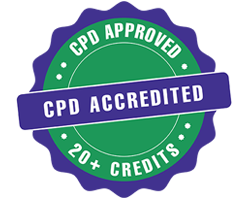Title : Long-term outcomes of traditional, complementary and alternative medicine for pain management: A prospective cohort study
Abstract:
Background: Chronic pain is a pervasive condition with limited treatment options. Traditional, Complementary and Alternative Medicine (TCAM), including acupuncture, moxibustion, herbal medicine, mind-body therapies, cupping therapy and infrared technology, are increasingly used for pain management.
Methods: A prospective cohort study of 1,000 patients with chronic pain was conducted. Patients received TCAM therapies, including:
TCAM Therapies Used in the Study:
1. Acupuncture: A traditional Chinese medicine technique that involves inserting thin needles into specific points on the body to stimulate healing and pain relief.
2. Moxibustion: A traditional Chinese medicine technique that involves burning mug wort, a small, spongy herb, to stimulate healing and pain relief.
3. Herbal Medicine: The use of plant extracts or herbs to prevent or treat diseases.
4. Mind-Body Therapies: Techniques that focus on the connection between the mind and body, such as meditation,yoga, and deep breathing exercises.
5. Cupping Therapy: A traditional unani medicine technique that involves creating suction on the skin to stimulate healing and pain relief.
6. Infrared Technology: The use of infrared radiation to stimulate healing and pain relief.
Study Design:
1. Prospective Cohort Study: A research study that follows a group of people over time to examine the development of outcomes, such as pain relief.
2. Follow-up Points: The study participants were followed up at 2 months, 6 months, and 1 year to assess the long-term effects of TCAM therapies.
Outcome Measures:
1. Pain Intensity: The level of pain experienced by the study participants.
2. Quality of Life: The overall well-being and quality of life of the study participants.
Results: 1. Significant Reductions in Pain Intensity: The study found that TCAM therapies resulted in significant reductions in pain intensity.
2. Improvements in Quality of Life: The study found that TCAM therapies resulted in improvements in quality of life.
3. Acupuncture was the Most Commonly Used TCAM Therapy: The study found that acupuncture was the most commonly used TCAM therapy with 80% of participants using it.
4. Cupping Therapy, Moxibustion, and Infrared Technology Showed Positive Effects: The study found that cupping therapy, moxibustion, and infrared technology showed positive effects on pain management.
Conclusion: This study provides evidence for the long-term effectiveness and safety of TCAM, including acupuncture, moxibustion, herbal medicine, mind-body therapies, cupping therapy, and infrared technology for pain management. The findings suggest that TCAM therapies may be a valuable adjunct or alternative to conventional pain management strategies.




